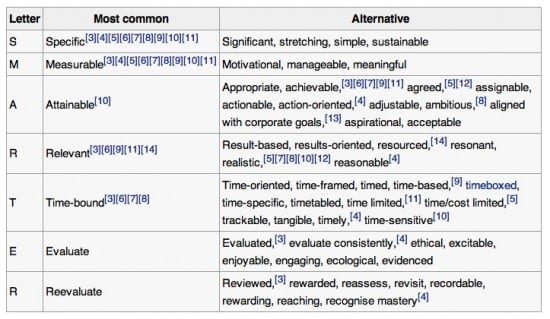Slideshare
lunedì 23 marzo 2015
mercoledì 11 marzo 2015
Ecommerce in Ireland 2015
Understanding the Irish online: the E-Commerce Marketer's secret weapon

Irish online habits have changed a lot in a very short amount of time. In some respects the Irish demographic is very representative of typical EU online behaviour but in others it is quite distinct. This particular profile of Irish internet users should give companies and marketers some clear ideas of the approaches to take when selling in the Irish market online.
One of the most significant statistics in regards to the internet in Ireland is the penetration of broadband services across the country. According to Eurostat, 81% of Irish homes had broadband access in 2014. That is well above the EU average and means that more than 3 million people in Ireland are online.
Irish Internet users also spend more time on the internet than the EU average. An average of 13.5 hours are spent online per week in Ireland. Of course that breaks down unevenly across age groups with under twenties spending almost twice the average online and over 35’s spending less than half that amount of time surfing the web.
Taking the old with the new - Irish consumption of media and the internet
A recent surge in evening bandwidth usage across Ireland has been attributed to the growth of streaming services, in particular Netflix, which is thought to have as many as 200,000 subscribers in the country. Other streaming services such as RTE Player have also contributed to this growth.
This movement of consuming traditional media via the internet is supported by figures from Mediascope research that shows increasing figures for Ireland.
According to Mediascope, 81% of internet users watch TV online, above the EU average of 73%. 66% listen to the radio online and 89% read newspapers online which are both on par with the EU average. Targeted ad spots on streamed services should offer high potential in reaching Irish media consumers.
The Mediascope research also highlights large numbers accessing the internet from mobile and tablet platforms, both of which they say are 50% higher than the EU average. Mobile internet use is at 31% of the population and 12% use tablets to go online. Responsive website design is clearly a vital element in taking advantage of the Irish market.
E-Commerce appetite in Ireland
Eurostat’s 2014 figures show that 43% of Irish internet users had made an online purchase in the previous quarter. Mediascope’s figures give an overall number for those shopping online in Ireland at 97% compared to an EU wide average of 87%.
An important figure from the Mediascope report is the number of Irish shoppers who research online and purchase offline (ROPO). 88% of internet users in Ireland research products online before buying in a local store.
The research also discovered that Irish consumers had spent an average of €685 per person in the previous 6 months. Most Irish internet users considered the internet to be an important factor when deciding on purchases from a range of markets, especially travel, holidays, mobile, financial products and insurance.
Overall the figures demonstrate that Irish internet users are eager to take advantage of high broadband availability and are not averse to adopting new technologies. They also show that Irish consumers are aware of the potential the internet offers in terms of getting value for money and finding not just the best price but also the best quality.
Important online factors to consider when marketing to the Irish
When marketing your products to an Irish audience there a number of factors to consider, many of which may be applicable in your own country:
- Secure payment facilities
- A variety of payment options – Visa Debit, Master Card, PayPal
- Trust signals – credit card logos, verified supplier
- Prices in Euro
- Fast load website load times
- Positive website user experience
- Well written and descriptive product descriptions
- Mobile and responsive website design
- Crystal clear product photography
- Friendly customer service
- Easy to locate terms and conditions
- Clear refunds and returns information
- Reasonable delivery times to Ireland
- Contact details – address, phone number and email
- Real product reviews
- Social media reviews – Facebook, Twitter, Google+ local, Yelp
The Irish online market offers E-commerce retailers an engaged and savvy audience that are spending increasing amounts of time and money on the internet. The opportunities are there and 2015 will only see the Irish market grow further.
Image/Copyright: Patrick Naughton
 Thanks to Patrick Naughton for sharing their advice and opinions in this post. Patrick Naughton is a digital marketing manager that specialises in international digital marketing. He works for Digital Skills Academy, a revolutionary digital technology educator with a proven track record in delivering high levels of successful employment outcomes for graduates. You can follow him on Twitter or connect on LinkedIn.
Thanks to Patrick Naughton for sharing their advice and opinions in this post. Patrick Naughton is a digital marketing manager that specialises in international digital marketing. He works for Digital Skills Academy, a revolutionary digital technology educator with a proven track record in delivering high levels of successful employment outcomes for graduates. You can follow him on Twitter or connect on LinkedIn.from Smart Insights http://ift.tt/1FJTTTN
via IFTTT
domenica 1 marzo 2015
How to define SMART marketing objectives
From SMART to SMARTER marketing objectives
When identifying specific marketing objectives to support your long-term goals, it is common practice to apply the widely used SMART mnemonic. You will know that SMART is used to assess the suitability of objectives set to drive different strategies or the improvement of the full range of business processes.
One of the main reasons that we called our site and service SMART Insights is because we wanted to help marketers succeed through using a more structured approach to planning to give more realistic targets they could be more confident of achieving. Using SMART objectives and then measuring them through properly customised analytics reports is a big part of how we hope to help too.
With SMART objectives documented in Plans linking objectives to strategies and KPIs everyone is sure exactly what the target is, progress towards it can be quickly and regularly reviewed, for example through an Ecommerce dashboard and, if necessary, action can be taken to put the plan back on target.
How can SMART objectives help set realistic targets?
When setting future objectives for marketing such as in a marketing plan it’s useful to look hard at each measure and ask “is it essential?”. The SMART mnemonic helps as a test or filter which you can use to assess the quality of measures. My personal definition of SMART is:
- Specific – Can the detail in the information sufficient to pinpoint problems or opportunities? Is the objective sufficiently detailed to measure real-world problems and opportunities?
- Measurable – Can a quantitative or qualitative attribute be applied to create a metric?
- Actionable – Can the information be used to improve performance? If the objective doesn’t change behaviour in staff to help them improve performance, there is little point in it!
- Relevant – Can the information be applied to the specific problem faced by the marketer?
- Time-related – Can the information be viewed through time to identify trends?
Of course different people interpret define SMART differently and you can refer to the Wikipedia definition of SMART marketing objectives.
Examples of SMART objectives
Here are some typical examples of SMART objectives, including those to support objective setting in customer acquisition, conversion and retention categories for digital marketing:
- Digital channel contribution objective. Achieve 10% online revenue contribution within two years.
- Acquisition objective. Acquire 50,000 new online customers this financial year at an average cost per acquisition (CPA) of £30 with an average profitability of £5.
- Conversion objective. Increase the average order value of online sales to £42 per customer.
- Engagement objective. Increase active customers purchasing at least once a quarter to 300,000 in a market (a hurdle rate metric)
Mistakes in setting objectives
It’s worth guarding against the mistake I sometimes see with student assignments where, rather than listing objective examples like those above, the student will create separate objectives under a heading of each of SMART - this doesn’t work… Better is to group objectives in a logical way, sometimes separating out overall business and marketing objectives and digital marketing objectives.
Another mistake to avoid is a big long list of objectives - yes I have seen a whole page of bullets with no structure... Instead group them logically in a way you would present them to colleagues. We recommend structuring them based on the RACE framework as show in this table aligning objectives to strategies and KPIs
The Ten Measures Design Tests
You can add to your tests of choosing the right objectives using these 10 measure design tests developed by performance management specialist Professor Andy Neely. For SMARTER metrics, ask these questions for your KPIs as you develop them.
- 1. The truth test. Are we really measuring what we set out to measure?
- 2. The focus test. Are we only measuring what we set out to measure?
- 3. The relevancy test. Is it the right measure of the performance measure we want to track?
- 4. The consistency test. Will the data always be collected in the same way whoever measures it?
- 5. The access test. Is it easy to locate and capture the data needed to make the measurement?
- 6. The clarity test. Is any ambiguity possible in interpreting the results?
- 7. The so-what test. Can and will the data be acted upon, i.e. is it actionable?
- 8. The timeliness test. Can the data be accessed rapidly and frequently enough for action?
- 9. The cost test. Is the measure worth the cost of measurement?
- 10. The gaming test. Is the measure likely to encourage undesirable or inappropriate behaviours?
These tests show there are additional filters on top of SMART are useful to choose the best measure, I particularly like the "So-what test, another way of explaining relevance and Gaming - a common issue with target setting that isn’t considered by SMART!
Alternative SMART objectives definitions
Finally, some have developed the SMARTER objectives definition that show the need to re-examine the relevance of SMART objectives through time:
This definition certainly shows the many alternative SMART objectives definitions - you may want to compare against these!
from Smart Insights http://ift.tt/1v0MzBV
via IFTTT

